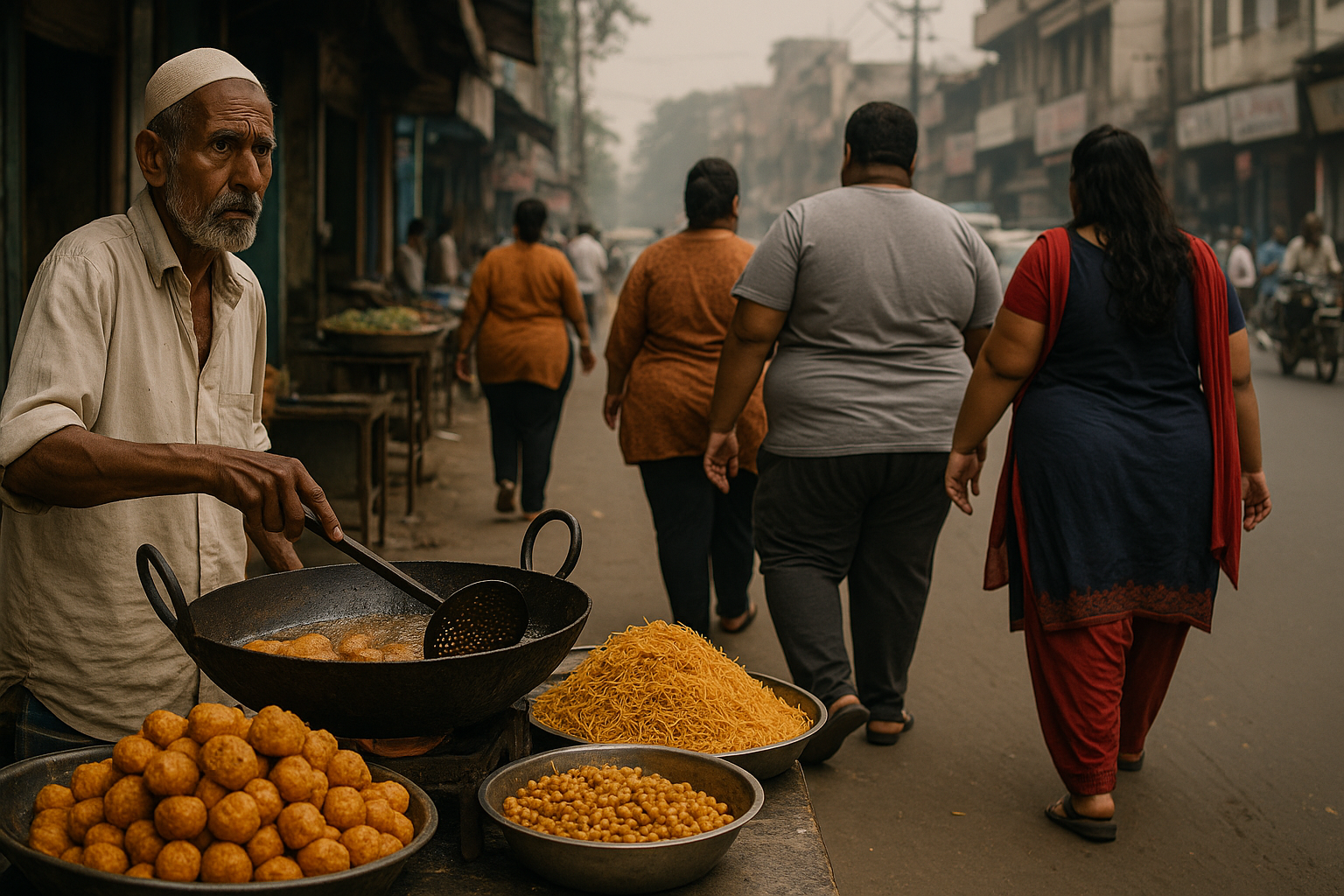From Undernutrition to Obesity: How South Asia’s Diet Shift Fuels a New Health Crisis
The World Bank’s report warns of a growing obesity crisis in South Asia driven by poor diets, physical inactivity, and systemic shifts in food environments. It calls for urgent, multisectoral reforms to transform food systems and curb rising noncommunicable diseases.

South Asia stands at a critical juncture in its nutritional journey. Once synonymous with undernutrition, the region now confronts an equally alarming surge in overnutrition, namely, overweight and obesity, particularly among urban and marginalized communities. This double burden of malnutrition has become a defining public health challenge for countries including Bangladesh, Bhutan, India, Maldives, Nepal, Pakistan, and Sri Lanka.
The World Bank’s 2025 report paints a sobering picture: obesity is no longer confined to affluent areas but has permeated low-income urban communities, exacerbating health inequalities. Meta-analyses revealed that obesity nearly doubles the risk of developing type 2 diabetes (OR 1.98) and increases the likelihood of hypertension by more than twofold (OR 2.65). These links are strongest in Bangladesh and Nepal. The result? A spiraling epidemic of noncommunicable diseases (NCDs) that is sapping productivity, deepening poverty, and overwhelming health systems.
Diets in Transition: From Tradition to Processed Temptation
The region’s dietary patterns are undergoing a dramatic shift. Traditional meals, once built around legumes, vegetables, and whole grains, are increasingly being displaced by ultra-processed foods high in sugars, fats, and sodium. In India, the per capita energy intake from sugar-sweetened beverages (SSBs) increased by nearly 100% among the rural poor over a decade. The Maldives mirrors this pattern: over 70% of schoolchildren consume fewer than two portions of fruits and vegetables a day, while nearly one-third regularly indulge in sweet snacks.
Even as fruit and vegetable intake lags far below recommended levels, the consumption of red and processed meats and sugary drinks continues to rise across the region. Countries like Bhutan and Pakistan report alarmingly low dietary diversity among adolescents. The cost and accessibility of healthy foods remain a significant barrier; over 50% of South Asia’s population could not afford a healthy diet in 2022. India alone accounted for 788 million people in this category.
Inactivity, Urbanization, and the Sedentary Surge
Equally concerning is the dramatic rise in physical inactivity, particularly among urban dwellers, adolescents, and women. The report cites that in India, insufficient physical activity (IPA) climbed from 22.4% in 2000 to nearly 50% by 2022. In the Maldives, 86% of adolescent girls and 78% of boys are physically inactive, and similar gender disparities are seen in Pakistan and Nepal. Urban lifestyles, marked by sedentary jobs, screen time, and limited green spaces, are a key driver.
Notably, IPA now disproportionately affects women due to sociocultural norms, safety concerns, and lack of access to recreational infrastructure. Socioeconomic status further complicates the picture: while higher-income groups were once more vulnerable due to sedentary lifestyles and diet excesses, these risks are now shifting toward the urban poor who rely on cheap, processed convenience foods.
The Food Systems Trap: Mapping the Root Causes
The World Bank report breaks down food systems into four interactive domains: individual factors and consumer behaviors (IFCB), food environments and supply chains (FESC), dietary intake, and external drivers like urbanization and trade. Using regression models and a Relative Attribution Index (RAI), the study identifies how each of these domains contributes to rising obesity trends.
The findings are striking. IFCB, particularly rising consumption expenditure and IPA, were the most influential, contributing up to 8.7% of annual obesity growth in adults in Bhutan and 10.2% in children in Sri Lanka. Food environment variables such as packaged food sales and grocery outlet density were moderately linked to obesity, especially in children. The dietary domain found strong associations between obesity and excess consumption of meat and sugary drinks. Every 1g increase in SSB intake raised childhood obesity odds by 3.4%. External drivers like urbanization and trade globalization also played significant roles.
While data limitations capped the observable contribution of food systems to obesity at around 10–12%, the report makes it clear this figure underrepresents the true impact. The real numbers are likely much higher.
Policies in Motion, But More Teeth Needed
Governments across South Asia have begun responding with a range of policy measures, but implementation remains inconsistent. India’s Eat Right India campaign and Fit India movement are commendable efforts toward promoting dietary awareness and physical activity. Bhutan’s farm-to-school initiatives, the Maldives’ energy drink regulations, and Sri Lanka’s color-coded nutrition labeling also reflect promising policy directions.
However, enforcement remains a concern. Many initiatives lack funding, interdepartmental coordination, or adequate data to track outcomes. Most importantly, the report urges policymakers to move beyond siloed approaches and embrace systemic change, restructuring how food is produced, distributed, marketed, and consumed.
A Call for Systems-Wide Transformation
The study delivers a powerful message: the obesity crisis in South Asia is not a mere outcome of personal choice, but the predictable result of deeply embedded systemic issues. Tackling obesity will require more than health awareness; it demands a reshaping of entire food systems. The report advocates for integrated, multisectoral action linking health, education, agriculture, and urban policy, supported by better data and stronger governance.
With the right reforms, South Asia can bend the curve of the obesity epidemic before it overwhelms future generations. But the time to act is now.
- FIRST PUBLISHED IN:
- Devdiscourse
ALSO READ
World Bank VP Concludes Visit to Bangladesh, Reaffirms $3B Support for Growth
Germany's Strategic Investment: Supporting Africa through the World Bank
World Bank Launches $127.5M Social Inclusion Project to Benefit 12M Kenyans
World Bank’s New Procurement Rules Require 30% Local Labor in Civil Works Contracts
World Bank Urges Equatorial Guinea to Leverage Forests for Growth










